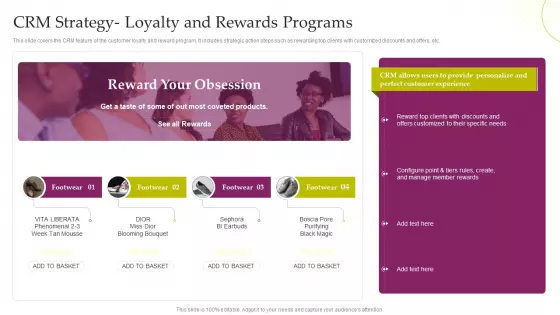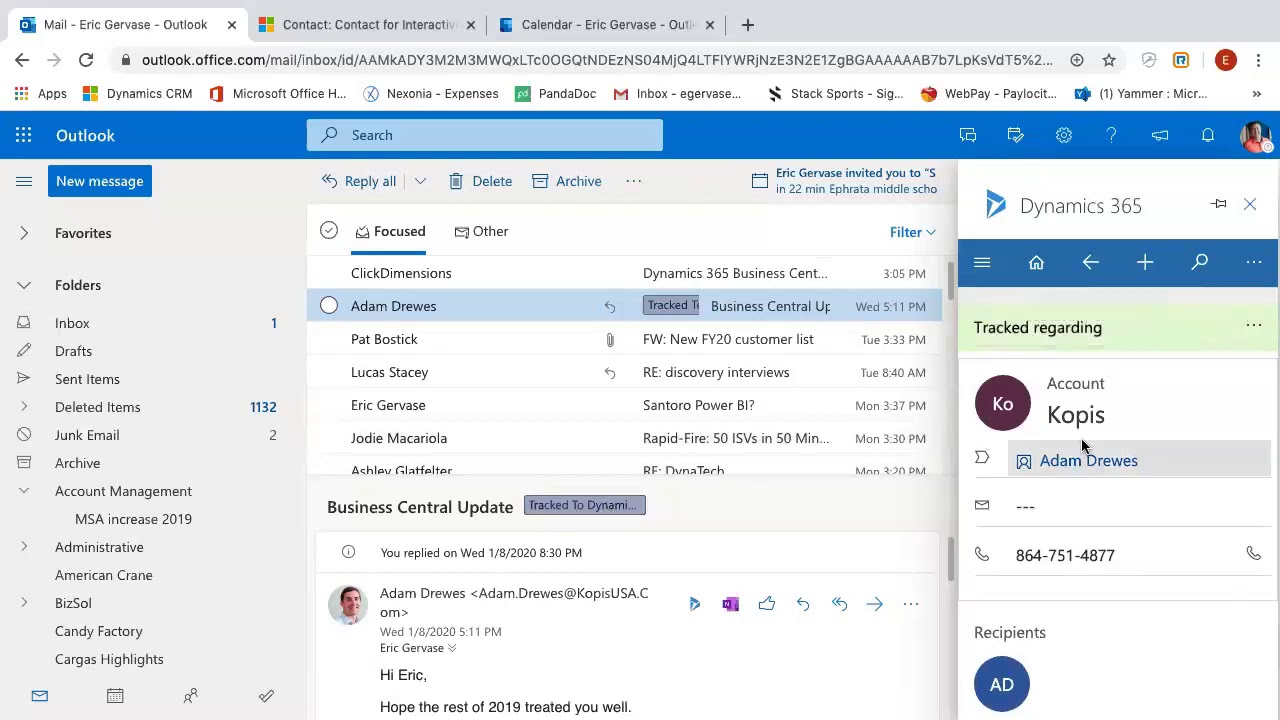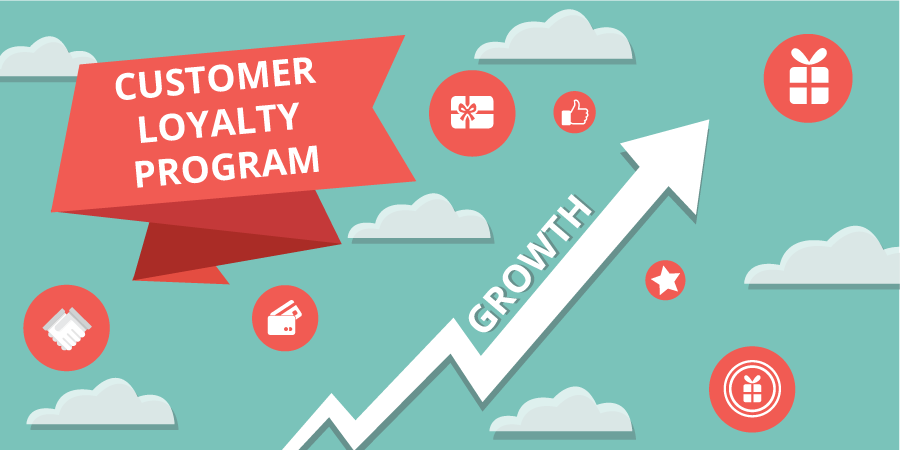
Unlock Customer Loyalty: A Deep Dive into CRM, Marketing, and Reward Programs
In today’s hyper-competitive market, customer loyalty isn’t just a nice-to-have; it’s the bedrock of sustainable business success. It costs significantly less to retain an existing customer than to acquire a new one, and loyal customers are more likely to spend more, refer your business to others, and forgive the occasional hiccup. This article delves into the synergistic relationship between Customer Relationship Management (CRM) systems, marketing strategies, and loyalty reward programs, providing a comprehensive guide to building lasting customer relationships and driving business growth.
The Power of CRM: Your Customer’s Central Nervous System
At the heart of any successful loyalty strategy lies a robust CRM system. Think of your CRM as the central nervous system of your customer relationships. It’s where you store, manage, and analyze all the critical information about your customers, enabling you to understand their needs, preferences, and behaviors. This understanding is the foundation upon which effective marketing and loyalty programs are built.
What is a CRM System?
A CRM system is a software solution that helps businesses manage interactions with current and potential customers. It centralizes customer data, allowing you to track every interaction, from initial contact to purchase and beyond. Key features of a CRM include:
- Contact Management: Storing and organizing contact information, including names, addresses, phone numbers, and email addresses.
- Interaction Tracking: Recording all interactions with customers, such as emails, phone calls, meetings, and website visits.
- Sales Automation: Automating sales processes, such as lead nurturing, opportunity management, and quote generation.
- Marketing Automation: Automating marketing tasks, such as email campaigns, social media posting, and lead scoring.
- Analytics and Reporting: Providing insights into customer behavior, sales performance, and marketing effectiveness.
Benefits of Implementing a CRM
The benefits of using a CRM system are numerous and far-reaching. Here are some of the key advantages:
- Improved Customer Relationships: By understanding your customers better, you can personalize your interactions and provide a more tailored experience.
- Increased Sales: CRM systems help you identify and nurture leads, track sales opportunities, and close deals more efficiently.
- Enhanced Customer Service: CRM systems provide customer service representatives with the information they need to resolve issues quickly and effectively.
- Increased Efficiency: Automating tasks and streamlining processes saves time and resources.
- Better Decision-Making: CRM analytics provide valuable insights into customer behavior and business performance, enabling data-driven decision-making.
- Improved Marketing ROI: CRM systems help you target the right customers with the right message at the right time.
Choosing the Right CRM System
Selecting the right CRM system is crucial for your success. Consider the following factors when making your decision:
- Your Business Needs: Identify your specific needs and requirements. What are your goals for implementing a CRM? What features are essential?
- Scalability: Choose a CRM system that can grow with your business.
- Integration: Ensure the CRM system integrates with your existing tools and systems, such as your website, email marketing platform, and accounting software.
- Ease of Use: The CRM system should be user-friendly and easy to learn.
- Cost: Consider the cost of the CRM system, including licensing fees, implementation costs, and ongoing maintenance costs.
- Support and Training: Choose a CRM vendor that provides adequate support and training.
Marketing Strategies that Fuel Loyalty
Once you have a CRM system in place, you can leverage it to develop and execute effective marketing strategies that foster customer loyalty. These strategies involve understanding your target audience, personalizing your messaging, and providing consistent value.
Segmentation and Targeting
CRM data allows you to segment your customers based on various criteria, such as demographics, purchase history, and engagement levels. This segmentation enables you to target specific groups with personalized messages and offers. For example, you could create a segment of high-value customers and offer them exclusive discounts or early access to new products.
Personalized Communication
Personalization is key to building strong customer relationships. Use your CRM data to personalize your email marketing, website content, and other communications. Address customers by name, recommend products based on their past purchases, and tailor your messaging to their specific interests and needs. This level of personalization makes customers feel valued and appreciated.
Content Marketing
Content marketing involves creating and sharing valuable, relevant, and consistent content to attract and engage your target audience. This content can take various forms, such as blog posts, articles, videos, and infographics. By providing valuable content, you can establish yourself as a thought leader in your industry and build trust with your customers. High-quality content can also help you drive traffic to your website, generate leads, and nurture customer relationships.
Email Marketing
Email marketing remains one of the most effective marketing channels for building customer loyalty. Use your CRM data to segment your email list and send targeted email campaigns. For example, you could send welcome emails to new subscribers, promotional emails to existing customers, and abandoned cart emails to customers who have left items in their shopping carts. Email marketing allows you to stay top-of-mind with your customers and drive repeat purchases.
Social Media Marketing
Social media is a powerful tool for building brand awareness, engaging with customers, and driving loyalty. Create a strong social media presence by sharing valuable content, interacting with your followers, and running targeted advertising campaigns. Use social media to promote your loyalty program, announce new products, and provide excellent customer service. Social media also enables you to gather valuable feedback from your customers and understand their needs and preferences.
Customer Feedback and Surveys
Actively seek feedback from your customers through surveys, reviews, and other channels. Use this feedback to understand their needs, identify areas for improvement, and tailor your offerings. Show your customers that you value their opinions by responding to their feedback and making changes based on their suggestions. This demonstrates that you are committed to providing a positive customer experience, which is essential for building loyalty.
The Art of Reward Programs: Incentivizing Loyalty
Loyalty reward programs are a powerful tool for incentivizing repeat purchases, increasing customer lifetime value, and building brand advocacy. When implemented effectively, these programs can create a strong emotional connection between your customers and your brand.
Types of Loyalty Programs
There are various types of loyalty programs, each with its own strengths and weaknesses. The best program for your business will depend on your industry, target audience, and business objectives. Here are some of the most common types:
- Points-Based Programs: Customers earn points for every purchase, which they can redeem for rewards, such as discounts, free products, or exclusive experiences. This is a very popular and versatile model.
- Tiered Programs: Customers are assigned to different tiers based on their spending or engagement levels. Each tier offers different rewards and benefits. This type of program motivates customers to spend more to reach higher tiers and unlock more valuable rewards.
- Cash-Back Programs: Customers earn a percentage of their purchases back in the form of cash or store credit. This is a straightforward and appealing option for many customers.
- Subscription Programs: Customers pay a recurring fee for access to exclusive benefits, such as discounts, free shipping, or early access to new products.
- Hybrid Programs: Combine elements of different program types to create a unique and customized loyalty experience.
Designing a Successful Loyalty Program
Designing a successful loyalty program requires careful planning and execution. Consider the following factors:
- Define Your Goals: What do you want to achieve with your loyalty program? Increase sales? Improve customer retention? Drive brand advocacy?
- Understand Your Customers: What rewards will resonate with your target audience? What motivates them to make repeat purchases?
- Keep It Simple: Make your program easy to understand and use. Customers should be able to easily earn and redeem rewards.
- Offer Valuable Rewards: The rewards you offer should be desirable and relevant to your customers. Consider offering a mix of tangible and intangible rewards.
- Promote Your Program: Make sure your customers know about your program. Promote it on your website, in your email marketing, and on social media.
- Track and Measure Results: Track key metrics, such as customer participation, redemption rates, and revenue generated by the program. Use this data to optimize your program over time.
Integrating Loyalty Programs with CRM
The true power of a loyalty program is unlocked when it’s seamlessly integrated with your CRM system. This integration allows you to:
- Personalize Rewards: Offer rewards that are tailored to individual customer preferences and purchase history.
- Automate Reward Delivery: Automatically award points or rewards based on customer behavior.
- Track Program Performance: Monitor key metrics, such as customer participation, redemption rates, and revenue generated by the program.
- Segment Customers: Identify and target specific customer segments with personalized offers and promotions.
- Improve Customer Experience: Provide a seamless and personalized experience for your loyalty program members.
Putting it All Together: A Synergistic Approach
The success of your customer loyalty efforts hinges on the integration of CRM, marketing strategies, and reward programs. Here’s a step-by-step approach:
- Implement a Robust CRM: Choose a CRM system that meets your business needs and integrates with your other tools.
- Gather and Analyze Customer Data: Populate your CRM with comprehensive customer data, including demographics, purchase history, and interaction history.
- Segment Your Audience: Use your CRM data to segment your customers into different groups based on their characteristics and behaviors.
- Develop Targeted Marketing Campaigns: Create personalized marketing campaigns that are tailored to each customer segment.
- Design a Compelling Loyalty Program: Create a loyalty program that offers valuable rewards and benefits.
- Integrate Your Loyalty Program with Your CRM: Integrate your loyalty program with your CRM system to personalize rewards and automate processes.
- Track and Measure Results: Monitor key metrics to track the performance of your loyalty program and marketing campaigns.
- Continuously Optimize: Regularly review your strategies, gather customer feedback, and make adjustments to improve your results.
Common Pitfalls to Avoid
While the combination of CRM, marketing, and loyalty programs is potent, there are common pitfalls to avoid to ensure success:
- Poor Data Quality: Inaccurate or incomplete customer data can undermine your efforts. Invest in data cleansing and validation processes.
- Lack of Personalization: Generic messaging fails to resonate with customers. Leverage your CRM data to personalize your communications.
- Complex Loyalty Programs: Overly complicated programs can confuse customers and reduce participation. Keep it simple and easy to understand.
- Ignoring Customer Feedback: Failing to listen to customer feedback can lead to dissatisfaction. Actively solicit and respond to customer feedback.
- Lack of Integration: A siloed approach limits the effectiveness of your efforts. Integrate your CRM, marketing, and loyalty programs for maximum impact.
- Ignoring the Customer Experience: Focus on the overall customer experience, from initial contact to post-purchase support.
The Future of Loyalty: Trends to Watch
The landscape of customer loyalty is constantly evolving. Here are some trends to keep an eye on:
- Personalization at Scale: Leveraging AI and machine learning to personalize customer interactions on a massive scale.
- Gamification: Incorporating game mechanics, such as points, badges, and leaderboards, to increase customer engagement.
- Experiential Rewards: Offering unique and memorable experiences, such as exclusive events or personalized services.
- Mobile-First Loyalty: Creating mobile-friendly loyalty programs that are accessible on smartphones.
- Data Privacy and Transparency: Being transparent about how you collect and use customer data and respecting customer privacy.
- Social Loyalty: Integrating loyalty programs with social media platforms to encourage sharing and engagement.
Conclusion: Building Lasting Customer Relationships
Building customer loyalty is a long-term game, but the rewards are well worth the effort. By implementing a robust CRM system, developing effective marketing strategies, and creating a compelling loyalty program, you can cultivate lasting customer relationships, drive repeat purchases, and achieve sustainable business growth. Remember that customer loyalty is not merely about transactions; it’s about building trust, providing value, and creating a positive customer experience. By focusing on these elements, you can transform your customers into loyal advocates who will champion your brand for years to come.
The key takeaway? Focus on understanding your customers, personalizing their experience, and rewarding their loyalty. By making your customers feel valued and appreciated, you’ll not only retain them but also transform them into advocates for your brand. Customer loyalty is the cornerstone of sustainable business success, and with the right strategies in place, you can build a thriving business built on strong customer relationships.

